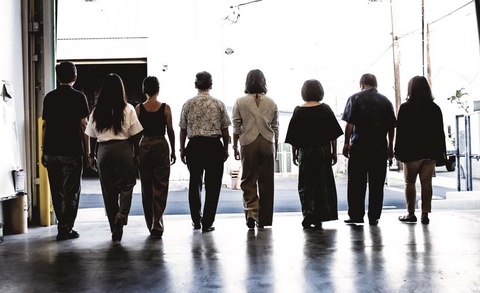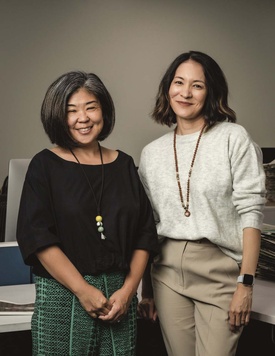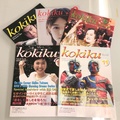Hawai‘i Herald Editor’s note: In our last issue of The Hawai‘i Herald, I’d like to pay homage to our paper’s rich historical background that has shaped and evolved us into what we have become today. Like many of us who look to our past in order to learn and appreciate who we are now, The Hawai‘i Herald – and all the stories that it’s shared over the years – can only be further treasured for what it’s given and meant to the community.
Though the end of The Hawai‘i Herald has been a hard reality to take for everyone, it’s the amazing journey that got us to where we are today that has been the most rewarding. Writer and frequent Hawai‘i Herald contributor Kevin Kawamoto shares his research about our paper’s historic past and how maybe we can use what we learned to further educate our keiki moving forward.

Japanese-language newspapers have a rich and storied history in the Hawaiian Islands. When Japanese immigrants began arriving in large numbers in 1885, they were not able to bring much material possessions. But many of them did bring something that is not often talked about when plantation history is discussed, and that is their keen interest in news. The immigrants wanted to know what was going on around them and back home in the old country, and so very early on in the “plantation days” there emerged a number of Japanese-language publications ready to serve that interest.
Between 1892 and 1920, 35 separate Japanese-language publications started in Hawai‘i. They had varying lifespans, but this showed a desire in the Japanese community in Hawai‘i for news and information, and there were people willing to provide that content.
Shunzo Sakamaki, a University of Hawai‘i at Mānoa graduate student and later professor, wrote his 1928 master’s thesis about the Japanese-language press in Hawai‘i. At that time, Sakamaki wrote that there were 10 Japanese newspapers “serving this large Japanese population,” the two largest being the Nippu Jiji and the Hawaii Hochi.

“The Japanese cherishes his newspaper,” Sakamaki wrote. “He reads it faithfully and finds keen enjoyment in doing so. Whether he understands some of the articles or not makes no difference. He must have his newspaper.”
Because the vast majority of Japanese immigrants didn’t read English, the Japanese-language newspapers were an important news source for them. Sakamaki wrote in his thesis that the Issei, separated from their home of birth, found comfort in their Japanese-language newspaper. “Here he lives in a familiar world; here he finds some measure of consolation.”
Among all the Japanese-language publications that existed in the 1900s, one notable name survives: Hawaii Hochi. It was founded in 1912 by Fred Kinzaburo Makino. Historian Dr. Franklin Odo wrote in his book, A Pictorial History of the Japanese in Hawai‘i, that Japanese-language newspapers “served as the only major network through which the ‘Issei’ learned of important events in Hawai‘i, reports of community affairs, and gossip about notable people within the Japanese community and outside it.”

Makino was also a fearless and persistent advocate for social justice. The mainstream media—or haole-controlled media—at the time reflected the prevailing social climate of the day, which was racist and often anti-Japanese in particular.
The famous case that Fred Makino and the Hawaii Hochi are known for involves Japanese-language schools in Hawai‘i. The government of the Territory of Hawai‘i nearly shut the schools down or attempted to heavily regulate them, but Makino took up the cause on the pages of the Hochi, which brought him under attack from the two English-language dailies at the time: The Honolulu Advertiser and the Honolulu Star-Bulletin. Makino argued that the Japanese-language schools should be autonomous.
He was on top of this case until the matter was decided by the highest law in the land – the United States Supreme Court, which declared the Territorial laws as unconstitutional to regulate Japanese-language schools.
Makino also called for fair wages and humane working conditions for Japanese immigrant laborers. He used the Hochi to drum up support for labor strikes if worker demands were not met by the plantations.
During World War II, under the supervision of martial law at the time, Nippu Jiji and Hawaii Hochi changed their names as a way to “Americanize” themselves to Hawaii Times and The Hawai‘i Herald, respectively. The Hawaii Hochi remained as The Hawai‘i Herald until switching back to Hawaii Hochi in 1952. Then on April 1, 1969, under the new company owner Konosuke Oishi and Hochi’s president and publisher Paul Yempuku, The Hawai‘i Herald name reappeared in a new eight-page English language tabloid, covering a combination of local news about Japanese Americans in Hawai‘i, the Cherry Blossom Festival, Japanese children’s folk tales and Japanese television schedules.
It came to an end in 1973, but emerged again in 1980 under the direction of founding editor Kenneth H. Toguchi. His mission with the publication was to “serve the Japanese American community, one of the largest and oldest immigrant groups in the state, by gathering information on local events, issues, lifestyles, and people.”
In June 1983, Arnold T. Hiura took over as editor, and shared more historical and literary pieces, along with special neighbor island and New Year’s issues – topping off at 96 pages in 1991. The circulation of subscribers skyrocketed from 5,242 in 1985 to 9,403 in 1993.
Longtime staff writer Karleen Chinen had taken over as editor by then, to which Mark Santoki followed in 1995. During that time frame, The Hawai‘i Herald was actively covering the Redress Movement and stories that covered important Nisei veteran stories and families such as Executive Order 9066 and the formation of the 100th Infantry Battalion and the 442nd Regimental Combat Team. In 2000, Warren Iwasa took over as editor then Chinen again in 2004. Chinen would go on to devote 16 years to the newspaper, the longest editor-reign of The Hawai‘i Herald.
Then during the peak of the COVID-19 pandemic, staff writer Jodie Chiemi Ching took on the role next as captain. In her first Dialogue write up as editor, Ching was excited for the “Herald to be useful and a way to make our Issei, Nisei, and Sansei values relevant to future generations.”Her perspective, as a Japanese and Okinawan Yonsei, helped expand the Herald’s relevance to technology, business, environment, wellness, and LGBTQ+ stories.
Then in May 2022, former freelancer writer and staff writer to The Hawai‘i Herald, Kristen Nemoto Jay took over as the new editor. Jay’s focus on Yonsei and Gosei-interest stories — including producing the paper’s first Pride and Black History Month issue during her reign — while continuing to share and connect past stories about Nisei and Issei ancestors, helped bridge the gap between generations and further honor and uphold the Japanese American experience in Hawai‘i.
The Hawai‘i Herald has been a primary source for understanding the history and evolution of the Japanese American community in Hawai‘i, in all of its diversity and from different perspectives, for more than four decades. I have been a freelance writer for the Herald for almost 33 years and have had the tremendous privilege of writing and reading about a wide variety of topics in the Herald that have touched the lives of Japanese Americans in some way.
Keeping an ethnic newspaper afloat and thriving in the United States is no easy task, but a group of dedicated writers, photographers, artists, editors, ad and production folks, etc., have worked together to do just that with unwavering dedication, passion and a strong sense of purpose. The archive of stories accumulated over the years will be a treasure-trove of cultural knowledge, analysis, and insights for our current and future generations.
The breadth and depth of Hawai‘i’s Japanese American community has been documented and preserved thanks to The Hawai‘i Herald. I celebrate the legacy that is The Hawai‘i Herald and every person — including those no longer with us — who has contributed to that legacy.
* This article was originally published in The Hawai‘i Herald on December 1, 2023.
© 2023 Kevin Y. Kawamoto






